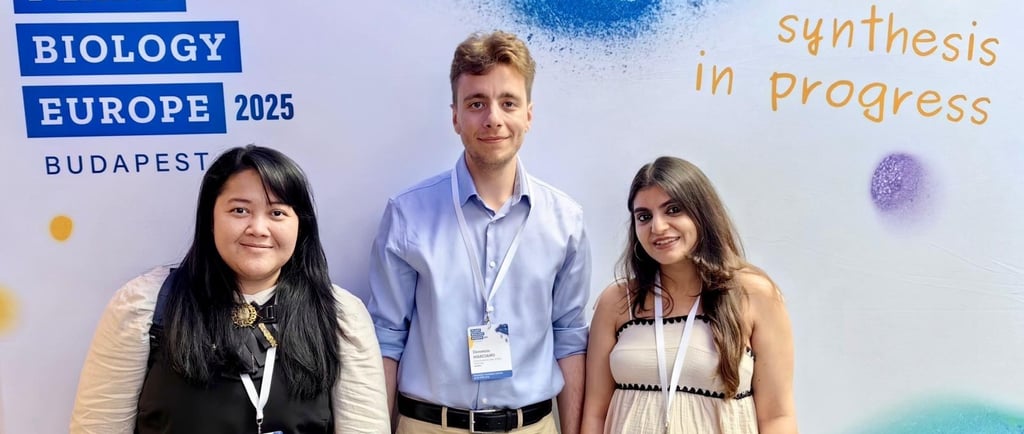Nancy Soni & Demetrio Marcianò at Plant Biology Europe 2025, Budapest
Two postdocs from the Plant Cell Wall Dynamics lab shared their latest findings at one of Europe’s key gatherings for plant science, presenting complementary perspectives on how photosynthetic organisms sense and respond to their cell walls.
NEWSWALL2CYCLE
Cell Wall Dynamis Lab
6/28/20252 min read


In June, postdoctoral researchers Nancy Soni and Demetrio Marcianò represented our lab at Plant Biology Europe 2025 in Budapest. Their talks, delivered in different sessions, spanned molecular mechanisms in Arabidopsis thaliana to evolutionary insights from green algae, together illustrating the breadth of our research on cell wall integrity (CWI).
Nancy Soni — From integrity to division: How cell wall status controls the cell cycle in plants
Nancy presented her work on the mechanochemical feedback loop that links cell wall composition and stiffness to cell cycle regulation in Arabidopsis. Using mutants in key cell cycle regulators (cyclins, DEL transcription factors, KIP-related proteins, E2Fs, CDKs) alongside chemical perturbations targeting pectin or cellulose, she found that changes in wall composition were accompanied by shifts in monosaccharide content—especially galactose, glucose, and glucuronic acid. Brillouin microscopy revealed that changes in cell wall stiffness are associated with delayed cell cycle progression, while softer walls promote endoreplication. Importantly, she identified the receptor-like kinase THESEUS1 (THE1) as a central mediator, required to translate wall-derived mechanical signals into cell cycle adjustments.
Demetrio Marcianò — A comparative analysis of receptor-like kinases in Chlorophyta reveals the presence of putative cell wall integrity sensors
Demetrio’s talk shifted the focus to the evolutionary origins of CWI sensing. By examining receptor-like kinases across diverse green algal genomes, he identified multiple candidates with domain architectures similar to known CWI sensors in land plants. His phylogenetic and structural analyses suggest that mechanisms for detecting and responding to cell wall changes likely emerged in aquatic ancestors long before plants colonised land. These findings broaden our understanding of CWI signalling as an ancient and conserved feature of the green lineage. Demetrio is the co-first author of a manuscript detailing these analyses, which can currently be found as a preprint here.
By combining molecular studies in a model flowering plant with comparative genomics in algae, Nancy and Demetrio’s presentations highlighted how cell wall sensing is both a finely tuned regulator of growth and a deeply rooted evolutionary innovation.
Nancy Soni (right) and Demetrio Marcianò (centre) with Dhika Amanda (left) –a colleague from NTNU also working on cell wall integrity– at the Plant Biology Europe 2025 conference.
